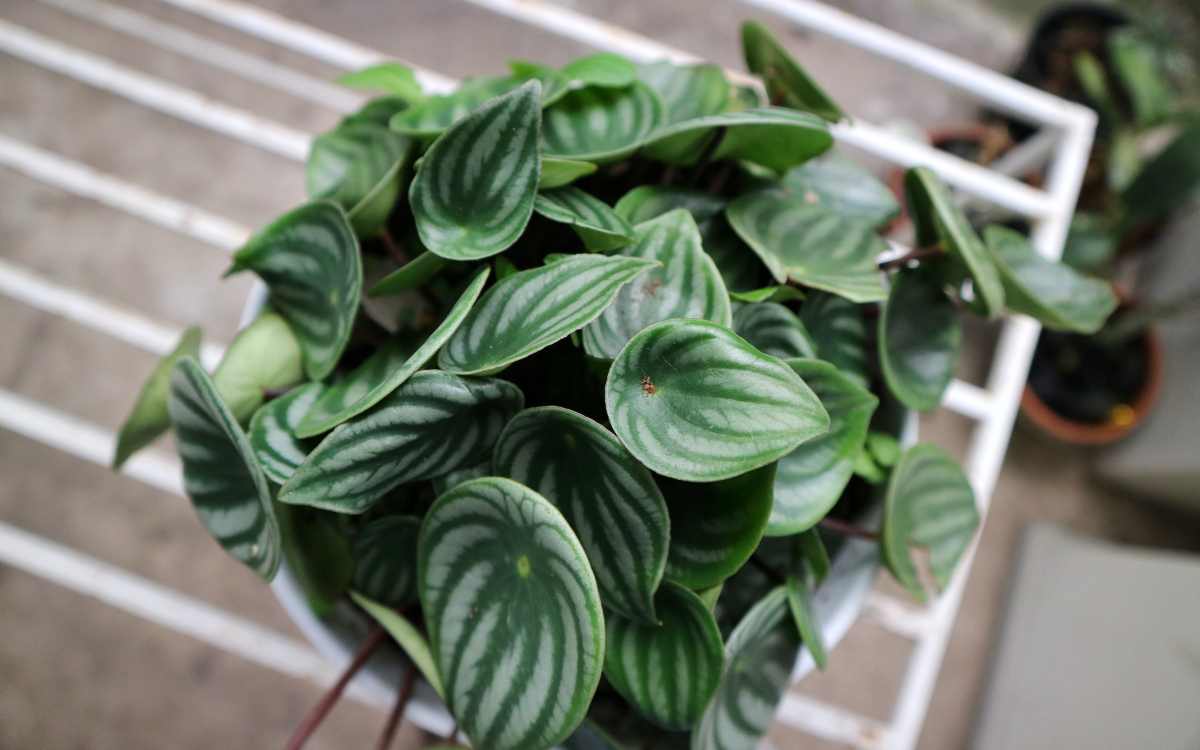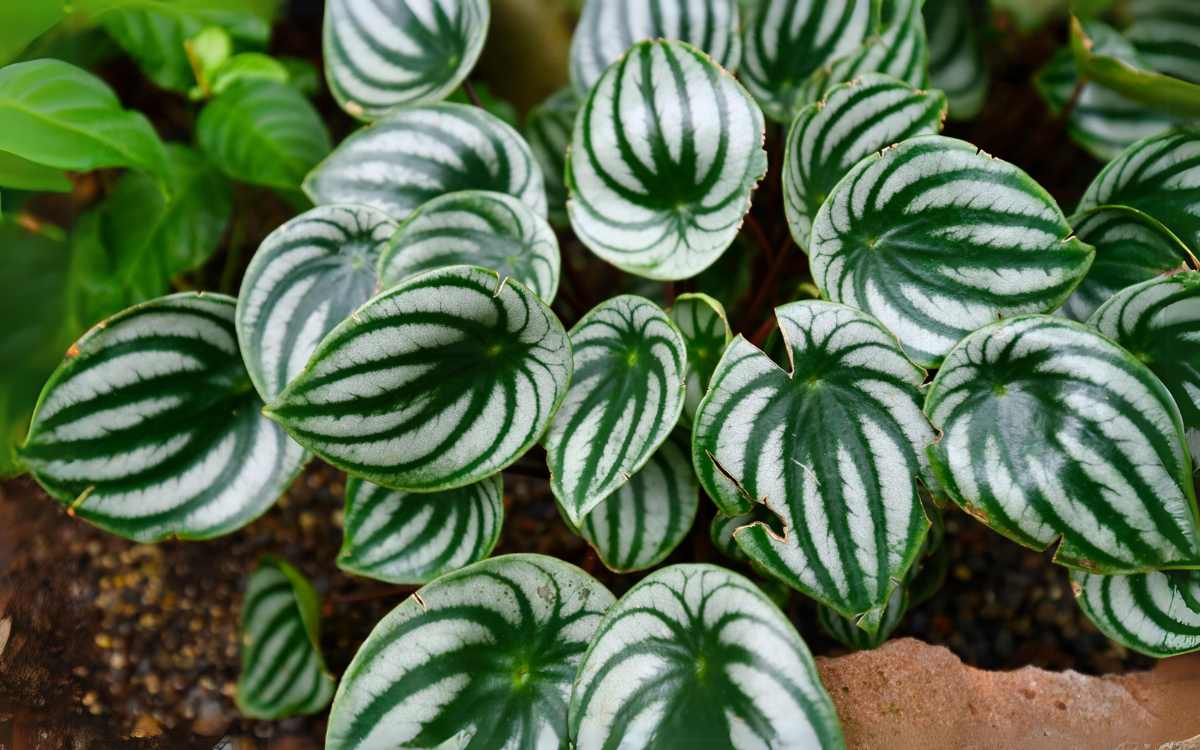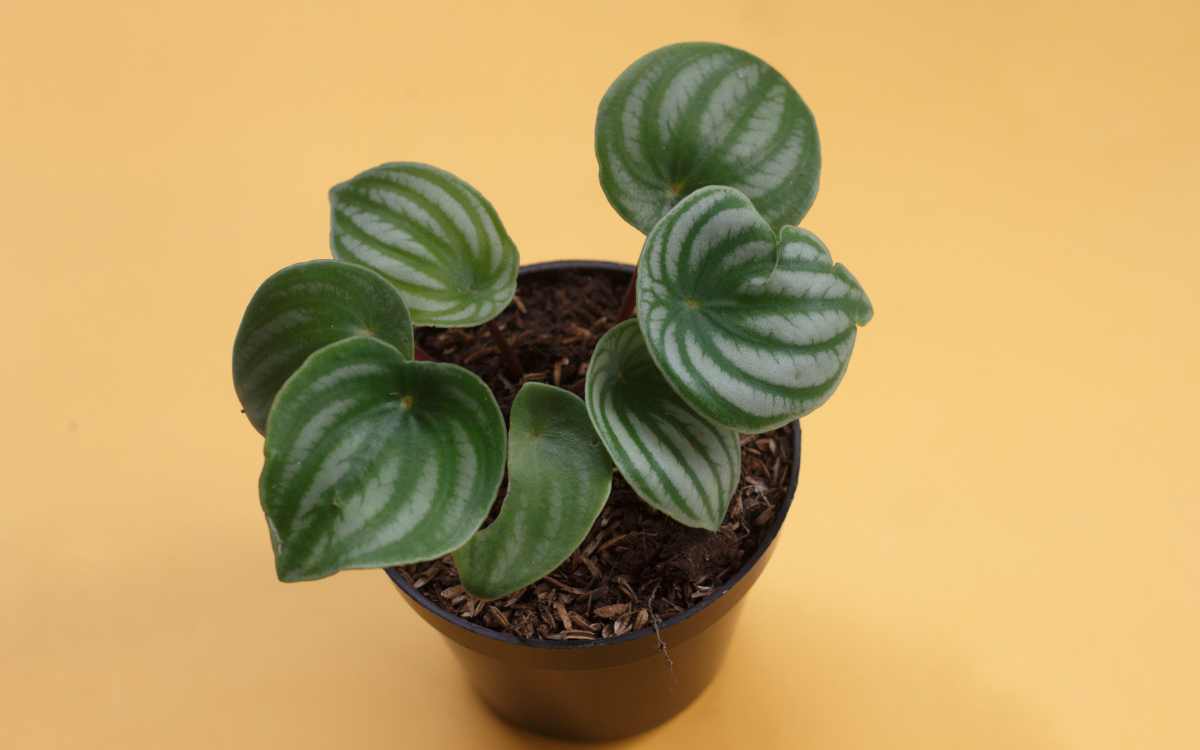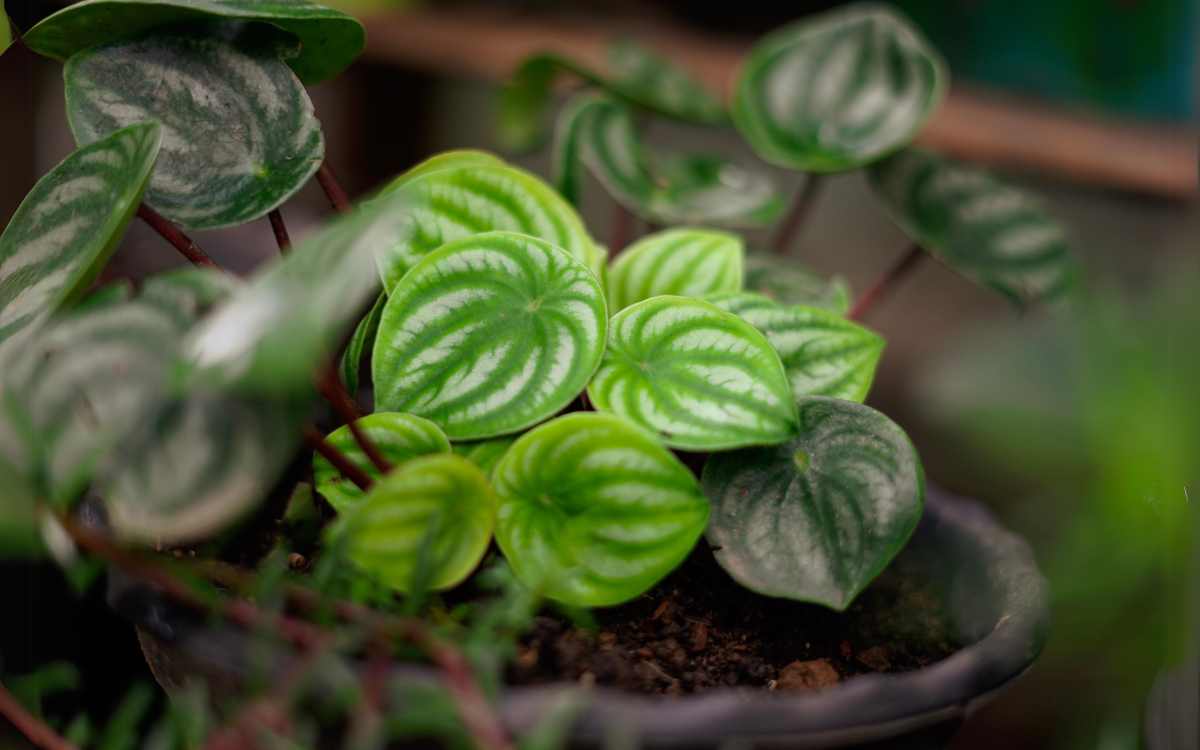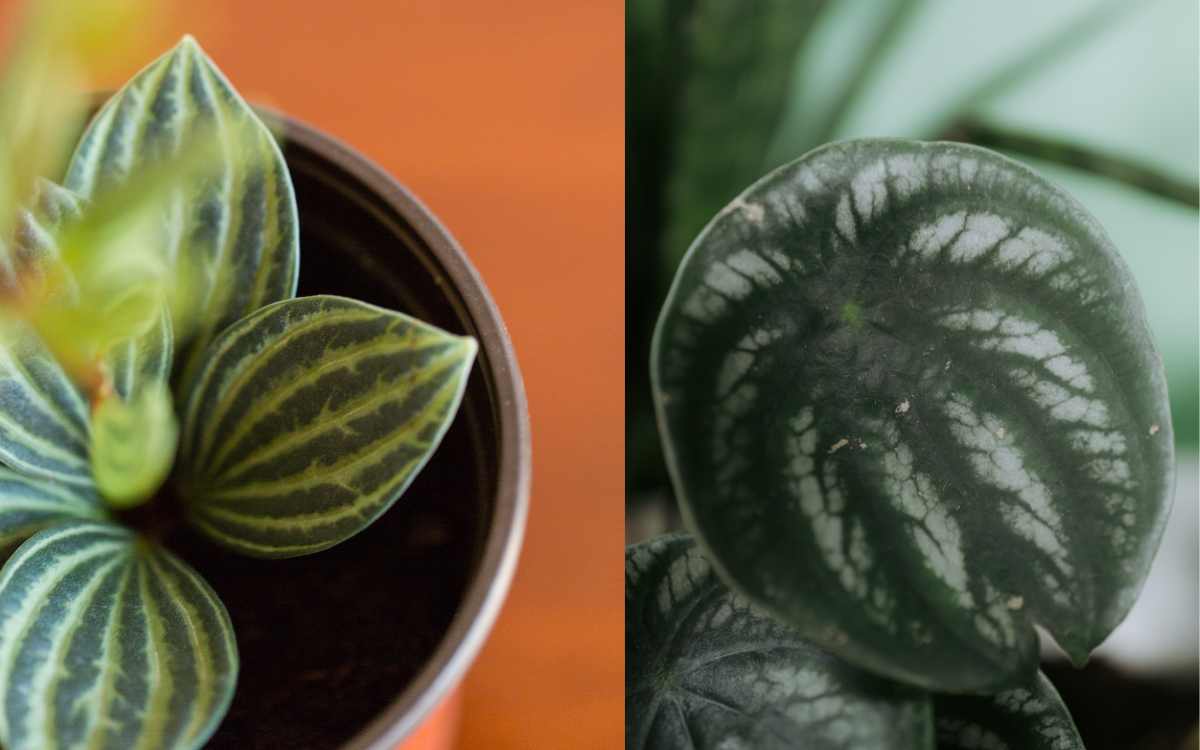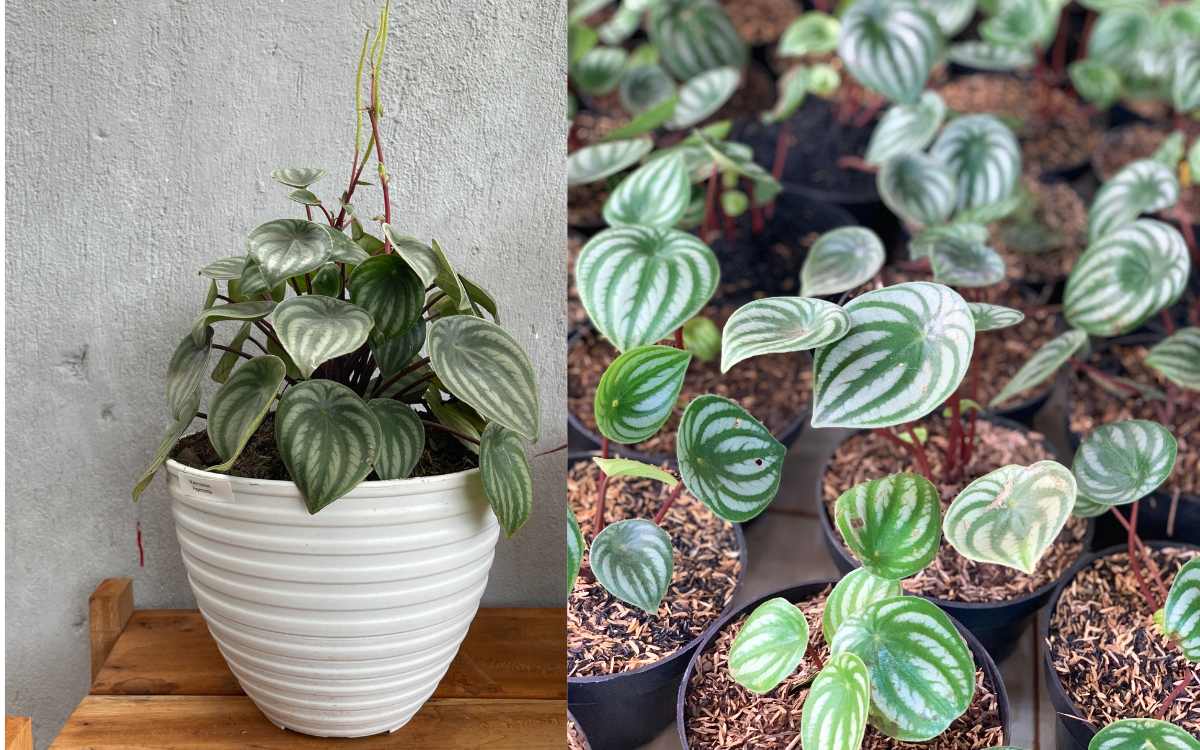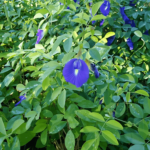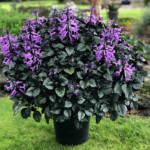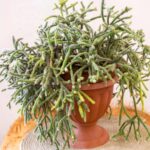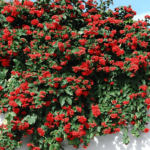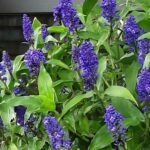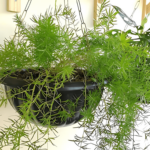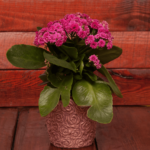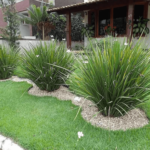The Watermelon Peperomia (Peperomia Argyreia) is a plant that is gaining popularity in the gardening world, especially as an indoor plant.
Native to Brazil, this species has leaves that resemble a watermelon rind and a pinkish stem that further beautifies the plant.
Below you will learn the characteristics and how to cultivate this plant.
Uses of Watermelon Peperomia
The Watermelon Peperomia is widely used as an ornamental plant.
Its appearance with green and silver striped leaves makes it a visually captivating addition to any indoor space.
It is especially popular in environments such as living rooms, offices, and bathrooms, where its need for bright indirect light and humidity can be easily met.
Besides its decorative function, the Watermelon Peperomia also has air-purifying properties, contributing to the improvement of the quality of the environment where it is placed.
How to Care for Watermelon Peperomia
How to Plant
During planting, follow these steps:
- Choose a pot with drainage holes.
- Fill the pot with enriched soil mix.
- Plant the Watermelon Peperomia, ensuring the roots are well covered and firmly positioned in the soil.
- Water the plant lightly, ensuring the soil is moist but not waterlogged.
How to Repot
Repotting the Watermelon Peperomia is an important part of plant care, especially as it grows and needs more space.
The best time to repot is during spring or early summer, when the plant is in its active growth period.
To repot, follow these steps:
- Select a new pot that is slightly larger than the current one, with good drainage holes.
- Prepare a soil mix similar to the one used in the initial planting, with peat, perlite, and vermiculite to ensure good drainage and moisture retention.
- Carefully remove the plant from the current pot to avoid damaging the roots.
- Place a layer of fresh soil at the bottom of the new pot.
- Position the Watermelon Peperomia in the center of the pot and fill around it with more soil, pressing lightly to secure the plant.
- Water the plant moderately after repotting.
Ideal Climate
The Watermelon Peperomia, native to the rainforests of South America, thrives in warm and humid conditions, typical of its natural habitat.
To ensure healthy growth of this plant indoors, it is essential to recreate these conditions as closely as possible.
Temperature
The Watermelon Peperomia thrives best in temperatures ranging from 18°C to 24°C (64°F to 75°F). This temperature range provides a stable environment that is conducive to the continuous growth of the plant.
It is crucial to avoid sudden temperature changes, as they can stress the plant and affect its health. Very cold or very hot environments should be avoided.
Humidity
Being a tropical plant, the Watermelon Peperomia requires a humid environment to thrive.
Although the soil should maintain moderate moisture, it is equally important not to overwater to avoid root rot.
A recommended practice is to regularly mist the leaves with water, which will help increase the humidity around the plant, especially during drier periods.
Read too:
- Manacá: How to Care and Make Seedlings (With Photos)
- Blue Ginger: Properties, Care, and How to Propagate
- Meet the Ghost Orchid: Its History and Characteristics
- Gardenia: Characteristics, How to Care and Propagate
Lighting
The Watermelon Peperomia requires bright indirect light to grow healthily.
Direct sunlight can cause leaf burns, so it is ideal to place the plant in a location that receives filtered light.
A north-facing window can be an excellent spot as it usually offers the ideal amount of light without direct sun exposure.
Ventilation
Avoiding strong drafts is crucial for the well-being of this plant.
Environments with cold or hot drafts can harm it. Likewise, very dry places, such as those caused by heaters or air conditioning, are not ideal.
Ideal Soil
Below are some important characteristics for the soil of this peperomia.
- Good Drainage: The soil should allow the rapid elimination of excess water, avoiding waterlogging, which can lead to root rot. This is essential to prevent root diseases and ensure that the plant receives only the necessary amount of water.
- Moderate Moisture Retention: Although the soil needs to drain well, it should also be able to retain enough moisture to provide water to the plant’s roots between waterings. The balance between drainage and moisture retention is crucial.
- Good Ventilation: The soil should allow air circulation, preventing compaction that can suffocate the roots. Well-ventilated soil helps promote root health and vigorous plant growth.
Some compost options you can use in the soil of this plant are:
- Peat: Peat is excellent for retaining moisture and providing a light texture to the soil, helping to maintain a humid but not waterlogged environment.
- Perlite: Perlite is added to the soil to improve drainage and aeration. It helps prevent soil compaction and promotes air circulation, essential for root health.
- Vermiculite: Vermiculite also contributes to moisture retention and improves soil structure. It maintains the necessary moisture and provides a good base for root growth.
This combination provides a perfect balance between drainage, moisture retention, and ventilation, meeting the specific needs of the Watermelon Peperomia.
Additionally:
- Avoid Heavy or Clay Soils: Soils that retain too much water or compact easily are not suitable for the Watermelon Peperomia, as they can harm the roots’ health and the plant’s growth.
- Avoid Soils for Cacti and Succulents: avoid specific mixes for cacti and succulents that tend to be drier than necessary for this plant.
How to Water
Watering should be done moderately, adjusting the frequency according to environmental conditions.
The frequency can vary depending on air humidity, ambient temperature, and soil composition. It is crucial to avoid both overwatering and underwatering to keep the plant healthy.
To determine the right time to water the Watermelon Peperomia, it is important to monitor the soil moisture regularly:
- Manual Touch: Insert a finger into the top layer of the soil. If the soil is dry up to about 2 cm (0.8 inches) deep, it is time to water.
- Moisture Meter: Use a moisture meter to get an accurate reading. This helps ensure the soil is at the proper moisture level without the risk of underwatering or overwatering.
The soil should be kept moist but never waterlogged. Water the plant until the water starts to come out of the drainage holes of the pot, ensuring that the roots receive sufficient moisture without water accumulation.
Fertilization
The Watermelon Peperomia does not require much fertilization.
The general recommendation is to fertilize the Watermelon Peperomia a few times a year, preferably during spring or summer. These periods are ideal because they coincide with the plant’s active growth phase.
You can use a low-nitrogen fertilizer, as fertilizers with excessive nitrogen can stimulate excessive leaf growth at the expense of the plant’s overall health.
Another option is organic fertilizers, as they provide nutrients in a more natural and sustainable way.
Fertilization Care
It is crucial not to overdo the amount of fertilizer. Excess can be harmful, causing root and leaf burns, as well as other damages.
Additionally, always follow the manufacturer’s instructions for dilution and application of the fertilizer. This will help avoid overdosing and ensure the plant receives only the necessary amount of nutrients.
How to Propagate by Division
Propagation by division is an effective method to multiply the Watermelon Peperomia, especially when the plant is well-developed and has multiple healthy branches.
- Carefully remove the plant from the pot, ensuring that the roots are not damaged during the process.
- Choose healthy branches, removing them carefully from the main plant.
- Prepare a moist and well-drained soil to plant the selected branches.
- Plant the branches in the prepared soil, ensuring they are firmly positioned.
How to Propagate by Leaf Cuttings
Propagation by leaf cuttings is another effective technique. This method involves using healthy leaves to generate new plants.
- Choose healthy leaves with a few centimeters (a couple of inches) of remaining stem. Cut them carefully, making a horizontal cut in the middle of the leaf.
- Plant the cut leaves in moist soil, leaving part of the leaf above the soil.
- Keep the cuttings well-moist, without waterlogging, and in a bright and airy place.
- The first new leaves should start to grow around the second month. Continue to keep the soil moist and the plant in a well-lit environment.
How to Propagate by Stem Cuttings
Propagation by stem cuttings is an additional technique that can be used.
- Use sterilized scissors to cut a stem cutting.
- Let the cut heal for a few hours before planting it.
- Dip the cutting end in rooting powder to induce new root growth.
- Plant the cutting in moist and well-drained soil or place it in water until roots grow.
- Ensure the soil or water is slightly moist and keep the plant in a warm and humid environment.
Pests
Mites are small arachnids that can cause significant damage to plants. They feed on sap, leading to yellowing and leaf drop. The presence of fine webs can indicate an infestation.
To prevent, frequently check the plant, especially the underside of the leaves. Maintain humidity around the plant, as mites prefer dry conditions.
To treat, use insecticidal soap or neem oil to control the infestation.
Mealybugs are pests that attach to leaves and stems, sucking sap and weakening the plant. They appear as small white or brown spots.
To treat, manually remove the mealybugs with a damp cloth or cotton swab dipped in alcohol or apply a specific insecticide for mealybugs or use neem oil.
Aphids are small insects that suck sap from plants, causing deformities and sticky excretions that can attract fungi.
To prevent, regularly check the plant, and to treat, use a mixture of water and soap or a specific insecticide for aphids.
See also these texts:
- Gazania – How to Grow and Propagate
- Blood Lily (Scadoxus Multiflorus): How to Grow and Care
- Congea Tomentosa (Wooly Congea): Characteristics and Care
- Clitoria Ternatea (Butterfly Pea): Characteristics and Care
Diseases
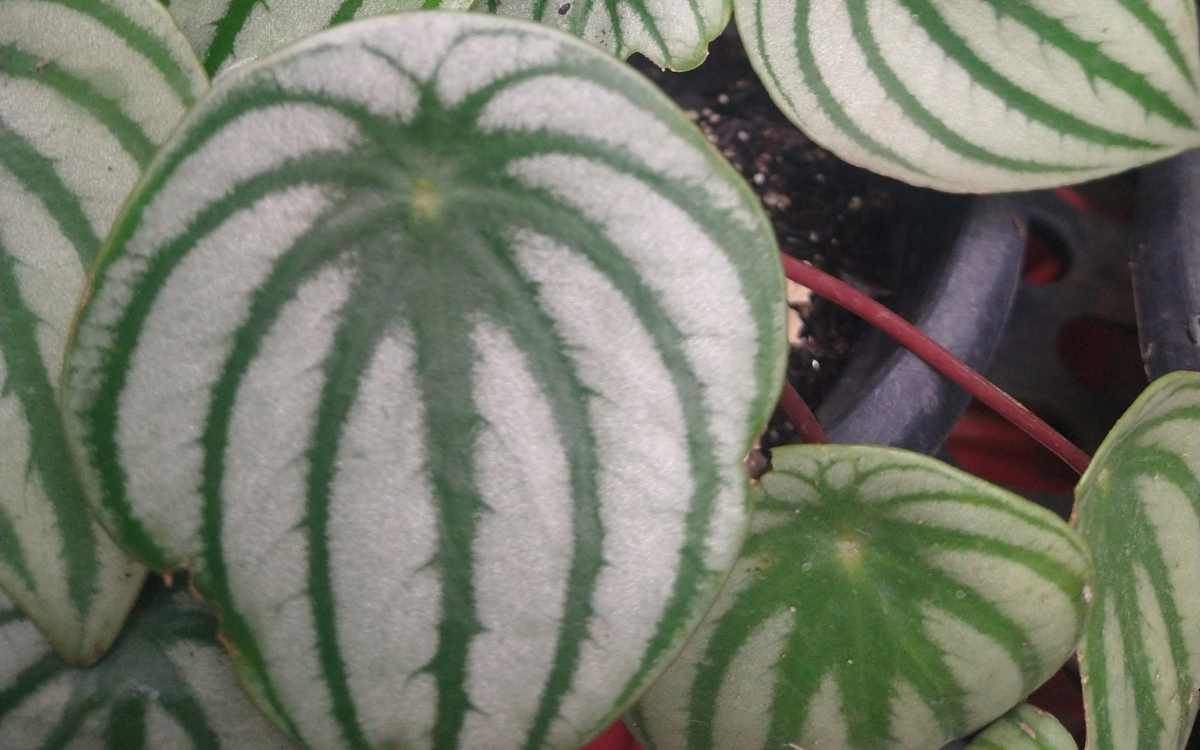
Root Rot is caused by excess moisture and poorly drained soil, leading to root rot and eventually the plant’s death.
If root rot is detected, remove the affected parts of the roots and replant the plant in new and well-drained soil.
Very humid environments with poor air circulation can lead to the development of fungi and bacteria, causing leaf spots and general plant deterioration.
If these problems appear in your plant, remove the affected parts and, if necessary, apply appropriate fungicides or bactericides.

